Doing the Math; Not Necessary!
By John Greco
Originally published on March 9, 2012
Re-posted with permission from johnponders blog
 “I regard it in fact as the great advantage of the mathematical technique that it allows us to describe, by means of algebraic equations, the general character of a pattern even where we are ignorant of the numerical values which will determine its particular manifestation.”
“I regard it in fact as the great advantage of the mathematical technique that it allows us to describe, by means of algebraic equations, the general character of a pattern even where we are ignorant of the numerical values which will determine its particular manifestation.”
— Friedrich August von Hayek
Say what? Algebraic equations? Where might this be going?!?
Here goes: we can equate certain actions, or conditions, or results — without applying numerical rigor — and yet produce a meaningful, insightful, valuable answer.
I’m going to attempt to do Friedrich proud… While my finance, accounting, and engineering friends might cringe, I am going to pose a couple of equations that I think are incredibly meaningful in describing organizational life, yet they require no calculation whatsoever. I call them my “engagement equations.”
First up: Involvement = Commitment.
The general idea here is that as we involve people in diagnosing and solving problems, their commitment to carrying out the resulting course of action grows stronger. Hence, more involvement means increased commitment.
That’s the proactive application of the equation. The reactive application might be when we see low commitment, we should suspect low involvement. And the prescriptive: if leaders want a more committed workforce, they should first seek to involve the workforce in diagnosing why there is low commitment!
Bottom line, we can equate commitment with involvement and be pretty confident it’s not a false equivalence.
I promised two, so next up: Performance = Freedom.
This one’s about the length of the leash. It prompts us to consider that when an individual or team is performing well, we should allow them more space, more autonomy, more freedom. We might get even more performance …
And, of course, there is the flip side: when performance is slipping, more attention might be warranted. Narrow the range, focus on the action.
 (I feel compelled to counter a possible negative perception of this last point by noting that isn’t it a very good thing if a manager sees when an associate or team is struggling, and at the right time and in the right way enters the picture and provides just the right amount of help to get back on the right track? Less freedom is not always a bad thing!)
(I feel compelled to counter a possible negative perception of this last point by noting that isn’t it a very good thing if a manager sees when an associate or team is struggling, and at the right time and in the right way enters the picture and provides just the right amount of help to get back on the right track? Less freedom is not always a bad thing!)Shifting our attention to the other side of the equal sign, freedom — autonomy — when earned by performing, can move performance to yet another level; and when there is no freedom, it might very well be thecause of the lagging performance, and not the effect.
Before I close, I can’t help but point out a bit of irony I see when looking at these two engagement equations together… One says “come closer, get involved” whereas the other suggests “I should leave you alone; you’re good!”
And what about the synergy? Involvement equals commitment can driveperformance, and performance equals freedom can enhance commitment!
So there you go, my “engagement equations” … which, honestly, factor into a lot of my work when seeking to improve organizational effectiveness. And I thought I’d never apply that algebra class in real life…
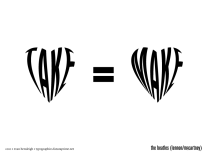 I look forward to seeing the ones that you’ve run across!
I look forward to seeing the ones that you’ve run across!Lastly, in closing, one more — a bonus! — a pretty well known non-mathematical equation, presented in song! from none other than Sir Paul McCartney and his Beatle buddies —
And, in the end, the love you take, is equal to the love you make.


 Twas the day after Christmas and all through the house, everyone was sleeping except for me. The reality is that I’ve not blogged in two days because of a deadly combination of holiday festivities and a horrible case of bronchitis. So, this morning I’m sitting at my computer and cleaning out my email inbox looking for blog ideas. There are scraps of ideas everywhere I look, but nothing cohesive was coming together until I opened an email from Tom Ahern, who is one of the biggest and brightest names in the field of donor communications.
Twas the day after Christmas and all through the house, everyone was sleeping except for me. The reality is that I’ve not blogged in two days because of a deadly combination of holiday festivities and a horrible case of bronchitis. So, this morning I’m sitting at my computer and cleaning out my email inbox looking for blog ideas. There are scraps of ideas everywhere I look, but nothing cohesive was coming together until I opened an email from Tom Ahern, who is one of the biggest and brightest names in the field of donor communications. I’m not sure about you, but every time I’ve experienced donors remorse, it has been because I made a contribution out of a sense of obligation. Here are a few examples:
I’m not sure about you, but every time I’ve experienced donors remorse, it has been because I made a contribution out of a sense of obligation. Here are a few examples: Several weeks ago, when I started this blog series, we discussed the idea of opening the lines of communication with donors through social media outlets. In this week’s post, I dive into chapter five of Lon Safko’s “
Several weeks ago, when I started this blog series, we discussed the idea of opening the lines of communication with donors through social media outlets. In this week’s post, I dive into chapter five of Lon Safko’s “ There are several benefits to engaging your donors in an on-line forum:
There are several benefits to engaging your donors in an on-line forum:
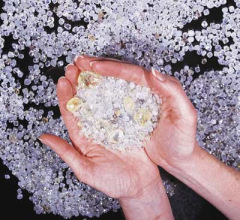 An African farmer heard tales about people who had made millions by discovering diamond mines. These tales so excited the farmer that he could hardly wait to go prospecting for diamonds himself. He sold the farm and spent the rest of his life wandering the African continent searching unsuccessfully for the gleaming gems that brought such high prices on the markets of the world. Finally, worn out and in a fit of despondency, he threw himself into a river and drowned.
An African farmer heard tales about people who had made millions by discovering diamond mines. These tales so excited the farmer that he could hardly wait to go prospecting for diamonds himself. He sold the farm and spent the rest of his life wandering the African continent searching unsuccessfully for the gleaming gems that brought such high prices on the markets of the world. Finally, worn out and in a fit of despondency, he threw himself into a river and drowned. Jerry, the financial analyst, can make a mean bouillabaisse. Mary, the executive admin, is a Toastmasters organizer. Julie, in inside sales, does graphic design for her church’s marketing pieces. Peggy, in tech support, is a stand up comedian. Bill, in logistics, does resumes on the side for family and friends. Susan, in customer support, is on the board of a local non-profit. Judy, a software tester, volunteers at the local hospice. Christian, a call center agent, paints. John, an industrial engineering manager, blogs. Damian, a research analyst, is an actor in a local drama troupe.
Jerry, the financial analyst, can make a mean bouillabaisse. Mary, the executive admin, is a Toastmasters organizer. Julie, in inside sales, does graphic design for her church’s marketing pieces. Peggy, in tech support, is a stand up comedian. Bill, in logistics, does resumes on the side for family and friends. Susan, in customer support, is on the board of a local non-profit. Judy, a software tester, volunteers at the local hospice. Christian, a call center agent, paints. John, an industrial engineering manager, blogs. Damian, a research analyst, is an actor in a local drama troupe.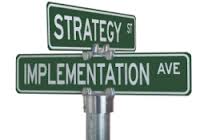 If I’ve heard it once, I’ve heard it hundreds of times . . . non-profit board volunteers and staff hate strategic planning. Why? The reasons are all over the place, but some of the more popular reasons given are:
If I’ve heard it once, I’ve heard it hundreds of times . . . non-profit board volunteers and staff hate strategic planning. Why? The reasons are all over the place, but some of the more popular reasons given are: I was running a Boys & Girls Club in Texas, when I was offered the Executive Director position for the Boys & Girls Clubs in Akron, Ohio. I knew the President of the Akron Community Foundation and not another soul in town. Thankfully, my Board had a plan.
I was running a Boys & Girls Club in Texas, when I was offered the Executive Director position for the Boys & Girls Clubs in Akron, Ohio. I knew the President of the Akron Community Foundation and not another soul in town. Thankfully, my Board had a plan. Program officers of foundations are incredibly generous with their time and are interested in learning about your organization. Community leaders, by definition, care about the community. Go talk to them. You will be pleasantly surprised by the number of people who say yes to your request for a meeting.
Program officers of foundations are incredibly generous with their time and are interested in learning about your organization. Community leaders, by definition, care about the community. Go talk to them. You will be pleasantly surprised by the number of people who say yes to your request for a meeting. Figure out the “must attend” event in town, and attend. And when you do, walk around and greet everyone, introduce yourself to people you haven’t been able to get in front of and ask if you can call them for a meeting. Again, you’ll be surprised at the number of people who say yes.
Figure out the “must attend” event in town, and attend. And when you do, walk around and greet everyone, introduce yourself to people you haven’t been able to get in front of and ask if you can call them for a meeting. Again, you’ll be surprised at the number of people who say yes.
 Sometimes I think the universe speaks to us, and lately it has been begging me to write this blog. Over the last few months, I’ve spoken with a good handful of non-profit professionals who have shared stories of scandal and crisis that would make your toes curl. These stories have ranged from incidents on the front line that made the local newspaper to outright embezzlement.
Sometimes I think the universe speaks to us, and lately it has been begging me to write this blog. Over the last few months, I’ve spoken with a good handful of non-profit professionals who have shared stories of scandal and crisis that would make your toes curl. These stories have ranged from incidents on the front line that made the local newspaper to outright embezzlement. For the record, I agree with my United Way friends. If you don’t know about
For the record, I agree with my United Way friends. If you don’t know about  You can probably spend the rest of your life writing policies, but let’s not get carried away. Here are a few questions I suggest you ask as you start going down this road:
You can probably spend the rest of your life writing policies, but let’s not get carried away. Here are a few questions I suggest you ask as you start going down this road: Once someone plops on your home page what do they see? Is it mobile friendly? Can they easily navigate it?
Once someone plops on your home page what do they see? Is it mobile friendly? Can they easily navigate it? Does mobile friendly really matter?
Does mobile friendly really matter?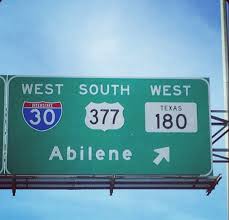 That July afternoon in Coleman, Texas was particularly hot — 104 degrees according to the Walgreen’s Rexall’s thermometer. In addition, the wind was blowing fine-grained Texas topsoil through the house. But the afternoon was still tolerable; even potentially enjoyable. A fan was stirring the air on the back porch; there was cold lemonade; and finally, there was entertainment. Dominoes. Perfect for the conditions. The game requires little more physical exertion than an occasional mumbled comment, “Shuffle ‘em,” and an unhurried movement of the arm to place the tiles in their appropriate positions on the table. All in all, it had the makings of an agreeable Sunday afternoon in Coleman. That is, until my father-in-law suddenly said, “Let’s get in the car and go to Abilene and have dinner at the cafeteria.”
That July afternoon in Coleman, Texas was particularly hot — 104 degrees according to the Walgreen’s Rexall’s thermometer. In addition, the wind was blowing fine-grained Texas topsoil through the house. But the afternoon was still tolerable; even potentially enjoyable. A fan was stirring the air on the back porch; there was cold lemonade; and finally, there was entertainment. Dominoes. Perfect for the conditions. The game requires little more physical exertion than an occasional mumbled comment, “Shuffle ‘em,” and an unhurried movement of the arm to place the tiles in their appropriate positions on the table. All in all, it had the makings of an agreeable Sunday afternoon in Coleman. That is, until my father-in-law suddenly said, “Let’s get in the car and go to Abilene and have dinner at the cafeteria.”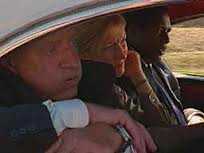 My first exposure to this story was as I was unknowingly about to experience it…
My first exposure to this story was as I was unknowingly about to experience it… I graduated from the University of Illinois Urbana-Champaign with my graduate degree in Urban Planning in 1994. In the summer immediately following graduation, I received my first fundraising appeal from the university. So, this story started almost 20 years ago, and it ended last night in an Applebee’s restaurant in Roswell, NM. In my opinion, there are lots and lots of little lessons throughout this story that every fundraiser should internalize.
I graduated from the University of Illinois Urbana-Champaign with my graduate degree in Urban Planning in 1994. In the summer immediately following graduation, I received my first fundraising appeal from the university. So, this story started almost 20 years ago, and it ended last night in an Applebee’s restaurant in Roswell, NM. In my opinion, there are lots and lots of little lessons throughout this story that every fundraiser should internalize. Almost 13 years later, The Chief danced his last dance at a football or basketball game.
Almost 13 years later, The Chief danced his last dance at a football or basketball game.